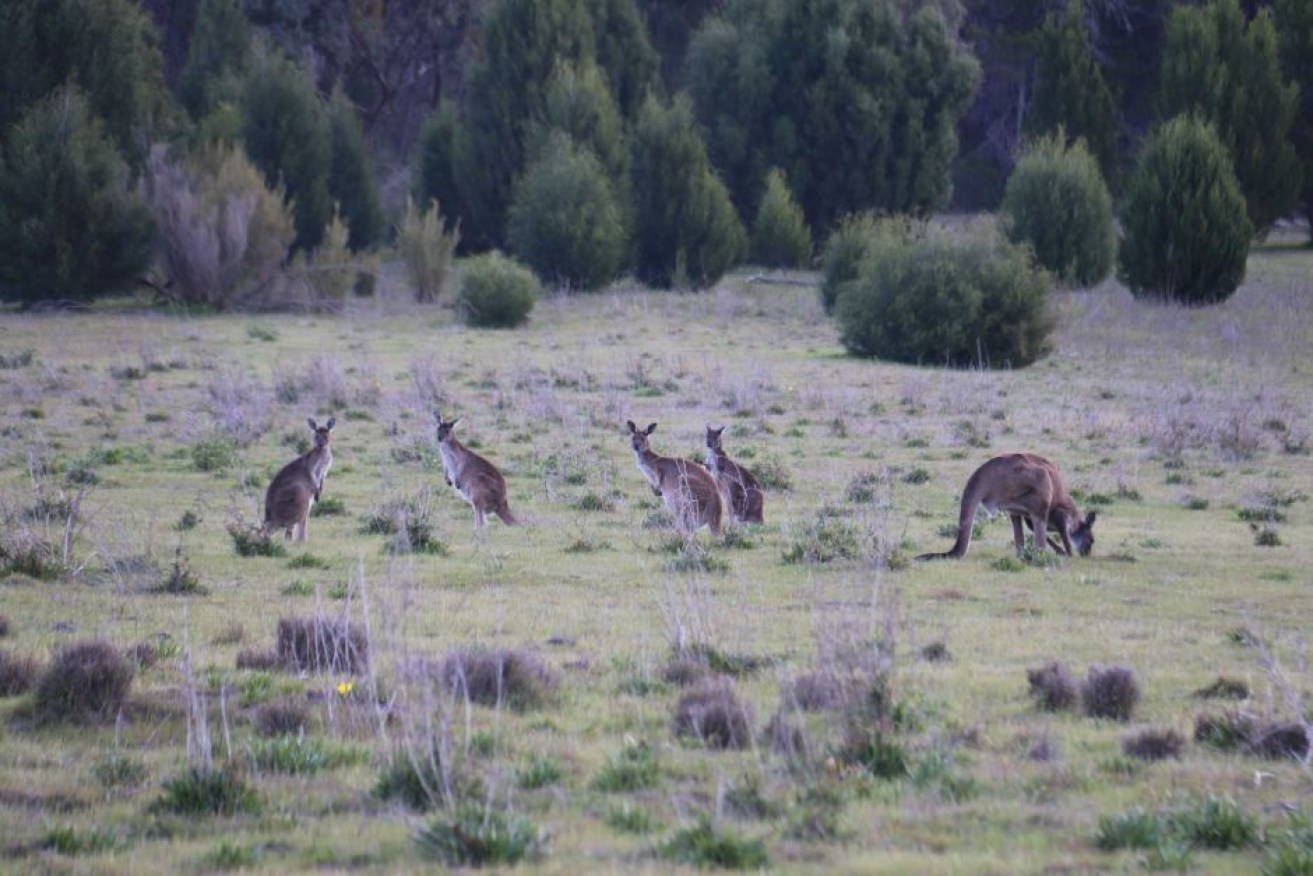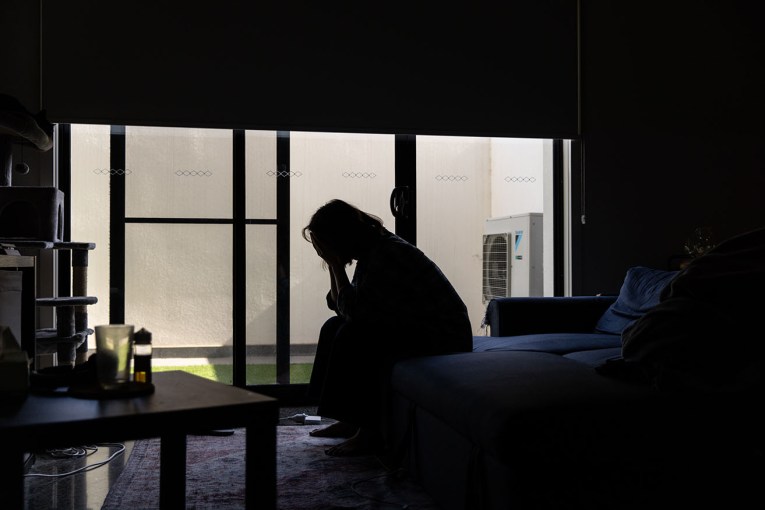Cull kangaroos and eat their meat, ecologist urges

These kangaroos have been chewing through vegetation in a Barossa Valley conservation park. Photo: ABC
Australians need to embrace kangaroo meat and help bring booming numbers of the marsupials under control to protect other species, a veteran ecologist has argued.
Associate Professor David Paton, from the University of Adelaide, said the community needed to get behind kangaroo culls in certain regions, and consuming roo meat would ensure the carcasses were not wasted.
“If we’re going to cull these animals we do it humanely, but we also perhaps should think about what we might use the animals that are killed for,” he said.
“We shouldn’t just simply leave them out in paddocks to rot or leave them in the reserves to rot.”
Associate Professor Paton has conducted a long-term experiment with several plots of fenced-off bushland at Sandy Creek Conservation Park in the Barossa Valley.
He said ever-increasing numbers of hungry kangaroos had been unable to get into the plots, allowing the vegetation to return to levels not seen since his youth in the 1970s.
Able to grow more freely, the plants were supporting birds that have not enjoyed the same levels of population growth as the park’s western grey kangaroos.
“This is as I remember it as a young man starting to be an ecologist, this is what we should have in these places,” Associate Professor Paton said.
“If you don’t cull the kangaroos or don’t reduce their populations in some way, then you’re going to lose a lot of other biodiversity.”
He stressed he was not against kangaroos, and blamed humans for land practices, and the removal of predators, that caused them to flourish.
“It’s not the kangaroos’ fault they’re overabundant, it’s probably we’ve just been too reluctant to take a stick to them, remove them out of the system sooner, to actually prevent the damage being caused.”

The “exclosure” which stops kangaroos from getting in and turning plants to “bonsai” with their voracious appetites. Photo: ABC
Kangaroos being culled on public and private land
South Australia’s Department for Environment, Water and Natural Resources estimated there were 4.7 million kangaroos in the commercial harvesting zone, which takes up much of rural South Australia.
Regional director Brenton Grear confirmed a cull had also been underway in the Mount Lofty Ranges.
“We’re implementing control programs in various parks and we are actually looking to expand those control programs,” he said.
“Under the National Parks and Wildlife Act, we can undertake measures on parks to cull kangaroos, and we also have … destruction permits, all done in the light of the Animal Welfare Act.”
Mr Grear wanted to reassure the community that kangaroos were being destroyed sensitively.
“We use competent shooters to actually ensure that animals are killed humanely.”
But Animal Liberation SA questioned whether the marsupials could be controlled through non-lethal means, saying it was opposed to culling.
“There is some talk of sterilisation, but I think that’s a while off, the best way to do it would be to relocate kangaroos,” spokeswoman Sally Sutton said.
“I know that they’re supposed to be shot with a headshot, but whether that’s the actual case, particularly because a lot of culls are done at night, how are they going to see to do a headshot, and also what happens to the joeys, that are in pouch or at foot.”
Labor MP backs community debate on cull
Tom Kenyon, the MP for Newland on Adelaide’s suburban fringe, had similar concerns about overabundant kangaroos.
“Some of my constituents have told me … they’re getting kangaroos coming onto their property in very large numbers, and that’s been a problem for them,” he said.

Ecologist David Paton says native vegetation is greatly diminished due to kangaroo overgrazing. Photo: ABC
Mr Kenyon, who has a degree in environmental management, said a cull may be the “least-worst” solution.
“The management of animals is untidy, and from time to time it’s going to be very ugly … but mass starvation of animals is also ugly,” he said.
David Paton said that dealing with exploding numbers of the emblem species was a “conundrum”.
“Is it just about kangaroos and is that the only thing, or is it about managing to keep kangaroos in the landscape at levels where they don’t take out much of the rest of our biodiversity?”
-ABC








